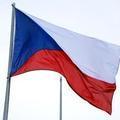About Czech Republic
The Czech Republic is a country in Central Europe. The country borders Poland to the northeast, Germany to the west and northwest, Austria to the south and Slovakia to the east. The Czech Republic has been a member of NATO since 1999 and of the European Union since 2004. From 1 January 2009 to 1 July 2009, the Czech Republic held the Presidency of the Council of the European Union.
The Czech Republic is a pluralist multi-party parliamentary representative democracy, with the Prime Minister as head of government. The Parliament is bicameral, with the Chamber of Deputies (200 members) and the Senate (81 members). The President of the Czech Republic is selected by a joint session of the parliament for a five-year term, with no more than two consecutive terms. The president is a formal head of state with limited specific powers, most importantly to return bills to the parliament, nominate Constitutional court judges for the Senate's approval and dissolve the parliament under certain special and unusual circumstances. He also appoints the prime minister, as well the other members of the cabinet on a proposal by the prime minister. In a 1948 coup d'état, Czechoslovakia became a communist-ruled state. In 1968, the increasing dissatisfaction culminated in attempts to reform the communist regime. The events, known as the Prague Spring of 1968, ended with an invasion by the armies of the Warsaw Pact countries (with the exception of Romania); the troops remained in the country until the 1989 Velvet Revolution, when the communist regime collapsed. On 1 January 1993, Czechoslovakia peacefully dissolved into its constituent states, the Czech Republic and Slovakia. The current Czech Republic comprises three historical lands: Bohemia in the West, Moravia in the South-East, and Czech Silesia in the North-East. Jointly, these 3 parts can be described as "Czech lands", with Czech language being spoken in all three. When the Czech nation regained its independence in 1918, the new state of Czechoslovakia was constituted to reflect the union of the Czech and Slovak territories that were merged together after World War One. According to the 2001 census, the vast majority of the inhabitants of the Czech Republic are Czech (94.24%). The most numerous national minorities are: Slovaks, Poles, Germans, , Ukrainians, Vietnamese, Hungarians, Russians, Romani, Bulgarians, and Greeks. In the Czech Republic, there were 436,116 foreigners residing in the country in October 2009, according to the Czech Interior Ministry, with the largest groups being Ukrainian, Slovak, Vietnamese, Russian, Polish, German, etc. The fertility rate is a low 1.50 children per woman. Immigration increased the population by almost 1% in 2007. About 77,000 new foreigners settle down in the Czech Republic every year. Vietnamese immigrants began settling in the Czech Republic during the Communist period, when they were invited as guest workers by the Czechoslovak government. Today, there are an estimated 70,000 Vietnamese in the Czech Republic. In contrast to Ukrainians, Vietnamese come to the Czech Republic to live permanently.
The Czech Republic, along with Estonia, has one of the least religious populations in the world. Historically, the Czech people have been characterised as "tolerant and even indifferent towards religion". According to the 2001 census, 59% of the country is agnostic, atheist or non-believer, 26.8% is Roman Catholic and 2.5% is Protestant. According to the census, the fastest growing religious group between 1991 and 2001 was those with no religion, which increased by 19.1 percent. Christianity showed negative growth, especially the Roman Catholic Church which lost more than 1 million of its members in 10 years. The largest population increase was No-religion which increased by nearly 2 million people. According to a Eurobarometer Poll in 2005, 19% of Czech citizens responded that "they believe there is a God“, whereas 50% answered that "they believe there is some sort of spirit or life force" and 30% said that "they do not believe there is any sort of spirit, God or life force". The Czech Republic has a temperate continental climate, with relatively hot summers and cold, cloudy and snowy winters. Most rain falls during the summer. The temperature difference between summer and winter is relatively high, due to the landlocked geographical position. The coldest month is usually January, followed by February and December. During these months, there is usually snow in the mountains and sometimes in the major cities and lowlands. The warmest month of the year is July, followed by August and June. On average, summer temperatures are about 20 degrees higher than during winter. Especially in the last decad, temperatures above 30 °C (86 °F) are not unusual. Summer is also characterized by rain and storms. The Czech landscape is exceedingly varied. Bohemia, to the west, consists of a basin drained by the Elbe and the Moldau rivers, surrounded by mostly low mountains, such as the Krkonoše range of the Sudetes. The highest point in the country, Sněžka at 1,602 m, is located here. Moravia, the eastern part of the country, is also quite hilly. It is drained mainly by the Morava River, but it also contains the source of the Oder River. Water from the landlocked Czech Republic flows to three different seas: the North Sea, Baltic Sea and Black Sea. The Czech Republic also leases the Moldauhafen, a 30,000-square-metre lot in the middle of the Hamburg Docks, to allow the landlocked country a place where goods transported down river could be transferred to seagoing ships. The territory reverts to Germany in 2028. There are four national parks in the Czech Republic. The oldest is Krkonoše National Park (Biosphere Reserve), Šumava National Park(Biosphere Reserve), National Park Podyjí, České Švýcarsko National Park.

